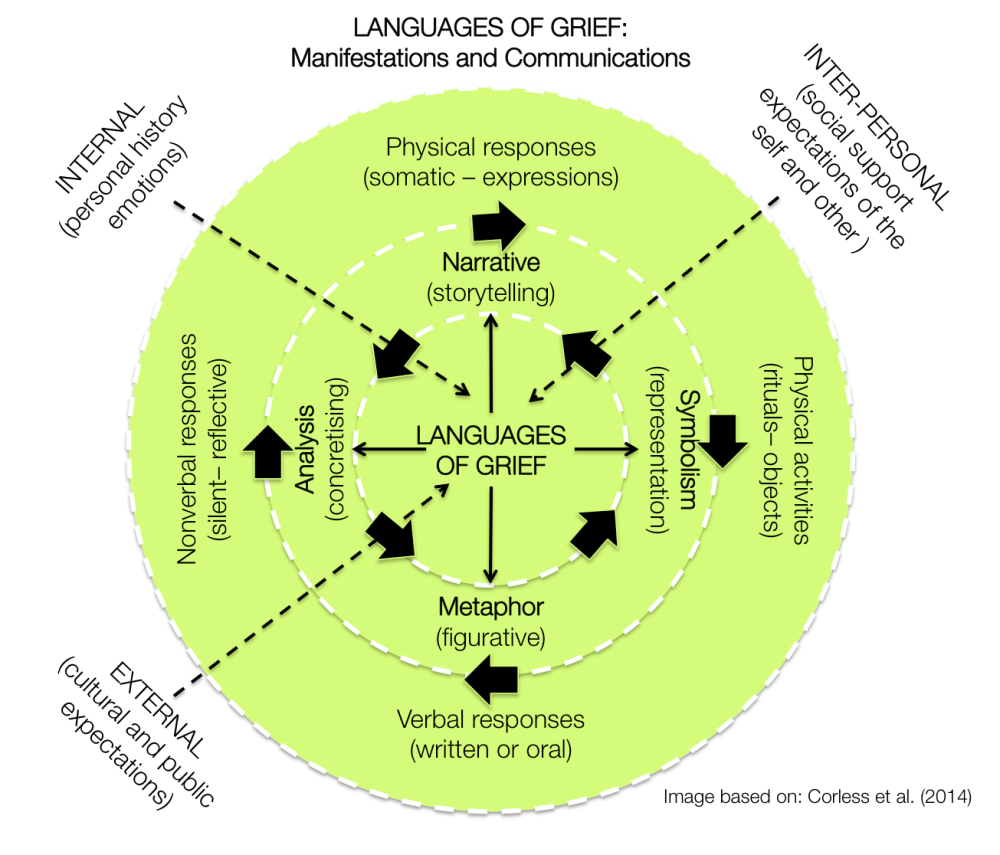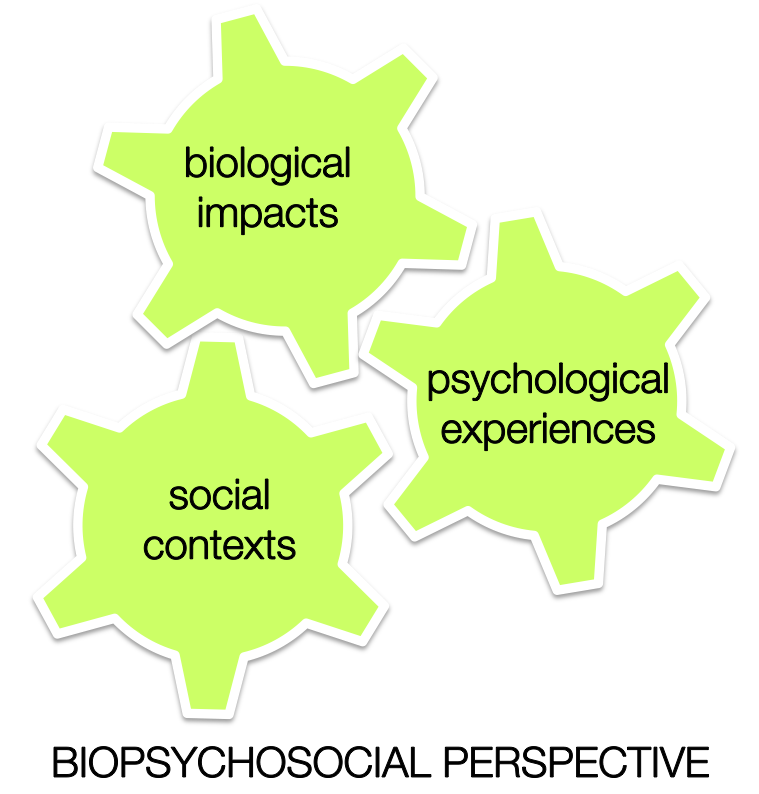
Nine years ago I experienced the depths of grief when my dad died. The words of the blogpost “A private tragedy” that I wrote then remind me of the immediate pain.
I generally don’t acknowledge this “stop all the clocks” moment, when a solid knot was tied in the thread of my life. But I recognise my grief in a sentence by Seamus Perry in discussing Auden’s poem that:
Often the true immensity of love is learned through realising the enormity of its absence.
For me, there’s a silence in grief. Words fail us – and those we encounter in the days, weeks, months and years that follow. Yet we need words to help us reconstruct what we’ve lost. To make sense of our love and hopes and their absence. We are tied to the knot of our loss and words help us continue, with a strand of what’s missing woven into our pastpresentfuturedness.
Talk about loss and grief is having its moment in April 2017. I’m sure it is helpful to hear those who may appear to have everything sharing their experiences of what have been public personal tragedies.
Such expressions helped to inform the Languages of Grief model designed to illuminate the perspective of the bereaved and “the pain of the griever”.

I think this framework would be helpful for those in public relations whose work involves communications concerning death and loss. This includes those working in the emergency services, charity sector and in crisis management situations, for example.
The Languages of Grief model includes four modes of expression:
- Verbal responses (written or oral)
- Nonverbal responses (silent or reflective)
- Physical responses (somatic or expressions)
- Physical activities (rituals or objects)
And four types of language:
- Narrative (storytelling)
- Symbolism (representation)
- Metaphor (figurative)
- Analysis (concretising)
As professionals we should be aware of these dimensions and how they combine to create “distinctive approaches” for communications. The model also considers the importance of being a “skilled listener” by including contingent factors that help us determine the most appropriate response. I contend that empathetic listening needs to be a more central component of public relations strategic practice.
Three types of contingent factors are proposed:
- Internal factors (personal experiences, emotions and expressions)
- Interpersonal factors (social support and set of expectations)
- External factors (the nature of the loss and cultural expectations including authoritative discourse and power relationships)
In public relations practice or scholarship, I’ve seen little consideration of the importance of languages of grief. I suggest that research could reveal the habitus of professionalised speaking by public relations communicators. Also, I propose that attending to the elements of the model would help to develop a more appropriate response framework that reflects the polyphony of human grief encountered within public relations work.
I feel we should also study the biopsychosocial aspects of grief, loss and trauma as part of the recent discussion within public relations around mental health issues.

The work of McCoyd and Walter is a useful starting point. They explain how a biopsychosocial perspective helps us consider the biological impacts of loss and grief as well as psychological experiences and social contexts. I argue there are interconnected physical and mental health consequences for public relations practitioners who are involved in stressful situations that may be described using Hughes’ sociological concept as emotional dirty work.
When public relations practitioners are employed as spokespeople they are enacting a role that may suppress their own ability to express emotion in traumatic situations.
Likewise, the culture of public relations work may not allow room for discussion of personal difficulties such as coping with loss. The concept of ‘disenfranchised grief‘ concerns the expected norms of response within a given culture where support of others may be lacking or withheld.
The occupation also needs to allow room for attending to physical health which can be compromised under the pressure of long-hours, an intense working environment and the “emotional labour performed within the job“.
Given the relatively young age of many practitioners working in public relations, there is a responsibility for employers, educators and professional bodies to offer support mechanisms and address any structural causes of unhealthy grief and stress.
Similarly in an ageing society, organisations need to recognise the impact of ambiguous and nonfinite or chronic grief, where loss is uncertain – such as with those affected by Alzheimer’s. Likewise, coping with financial or other problems following the death of a parent or partner add fear to grief. There are many such issues that seem to be of particular relevance to those specialising in the field of internal communications/relations, for instance.
My own research into careers in public relations has identified issues concerning employment volatility particular in the consultancy sector. Further modern careers lack the stability and reassurance provided by the traditional linear corporate trajectory. Expectations that individuals will be entrepreneurial, nomadic, boundaryless and personally responsible for their professional development in an age of decreasing career volition can be immensely stressful. This has potential for a significant biopsychosocial effect on individuals that cumulatively can impact the wider occupation.
There are many strands of grief that affect us as individuals and in our work as professional communicators. We can look to scholarship to understand and improve the frameworks of communications in traumatic situations as well as developing better understanding and approaches to accommodate those who are experiencing biopsychosocial difficulties within, and indeed, because of, the occupation’s working environment.
If you find yourself in need of support to cope with bereavement or other forms of loss and grief, do seek professional help. For example, you could contact Cruse Bereavement Care, the Samaritans, or a charity such as Marie Curie that provides online help. Most importantly, find someone to talk with and don’t go through grief or feelings of loss alone.
References:
Corless, I.B., Limbo, R., Bousson, R.S., Wrenn, R.L., Head, D., Lickiss, N. and Wass, H. 2014. Languages of Grief: a model for understanding the expressions of the bereaved. Health Psychology and Behavioral Medicine. 2(1): 132-143. Available from: https://www.ncbi.nlm.nih.gov/pmc/articles/PMC4345827/
McCoyd, J.L.M. and Walter, C.A. 2016. Grief and loss across the lifespan: a biopsychosocial perspective, 2nd edition. New York: Springer Publishing. Sample chapters available from: http://lghttp.48653.nexcesscdn.net/80223CF/springer-static/media/samplechapters/9780826120281/9780826120281_chapter.pdf
Other links are provided to sources in the post.

Heather, this is an excellent post and one which I believe should be given much consideration by the profession. The language of grief can be applied to many situations that practitioners will encounter. Most certainly, internal communications as you suggest, but also in the area of crisis communication. as well as circumstances where ‘loss’ is a central component of the situation. We’ve had many a natural disaster here in recent years and I have been concerned for some time that the communicators working to help others during and after the disasters (and the communicators are are frequently suffering the same effects as the people they are trying to assist) have to suppress their emotions, seemingly indefinitely, in order to get the job done. The organisations you list at the end of your post provide great support but I’ve wondered for some time whether our professional associations should have some formal support mechanisms in place for those in such positions. Equally, the language we choose when communicating to others during a period of loss and grief should be more considered than it generally tends to be. Thank you for this thoughtful – and thought-provoking read – definitely an area to investigate further.
Thank you Catherine. I’ve written a bit about coping strategies for stressful crisis management roles in the latest edition of the PR Handbook published last year. Definitely an area where there is more that scholarship and professional bodies could do. But important that any courses and advice are developed with expert input. Will send you an email on this topic as would be interested in developing a conversation with you for publishing on PR Conversations.
Look forward to the conversation.
This is a fabulous piece. Long time back I was part of a global team working on the crisis communication plan for an airline. I remember that there was in case of an accident a guideline for the country head dress. there was guideline to behave in a certain manner. Like it was mentioned that you are not suppose to smile on such an occasion. There was much more on Grief Language which this article is referring to.
Recently when PIA aircraft crashed in Pakistan media cameras caught a frame in which CEO PIA was smiling during the press conference. All the tickers later on ran under that frame and it was repeated with out even criticising the CEO for smiling. It was self explanatory 🙂